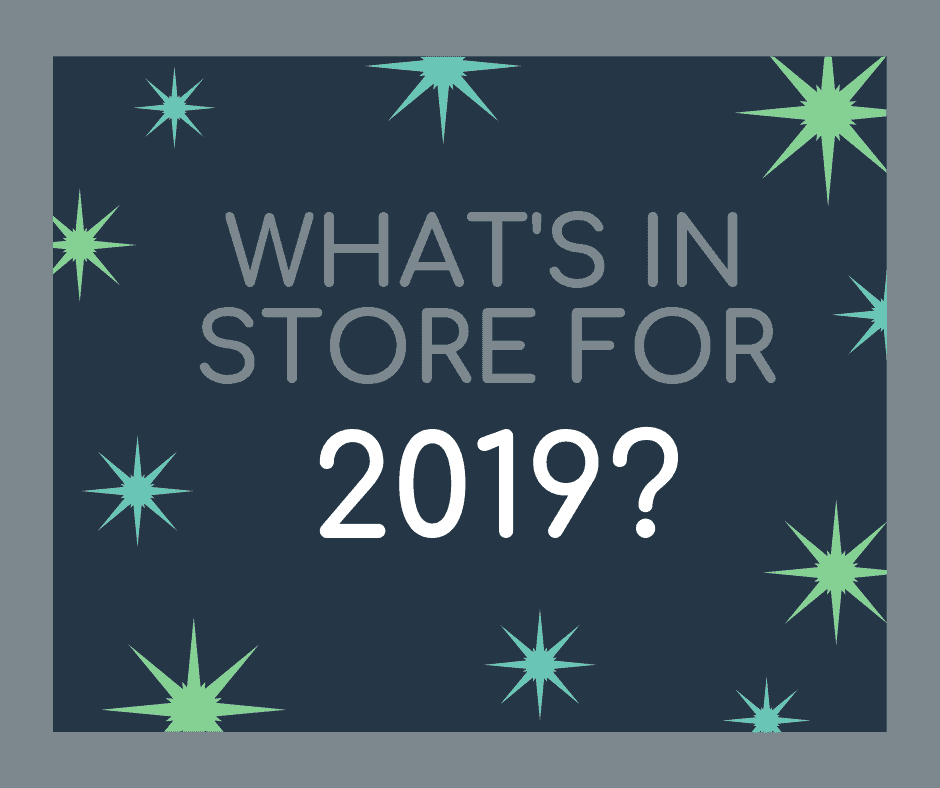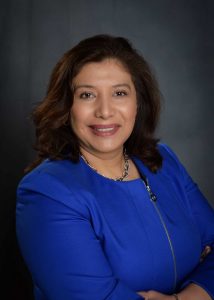
09 Jan HCF President’s View Ahead
Share This ArticleWith the new year, you may have set new goals and set forth a vision for the upcoming months. At HCF, we have done just that and are excited about the possibilities of 2019. Our President Maria Pesqueira reflects on how far the Foundation has come since last year and shares her thoughts on what it will focus on this year.
The new year is a time for reflection and new beginnings. For the Healthy Communities Foundation, 2019 will be a chance to consolidate our substantial progress and development over the past 18 months. We will continue to grow in our understanding and ability to ensure that every resident in our service area has the resources and opportunities to live a full, healthy, and happy life, regardless of their income, where they live, or their racial and ethnic heritage.
In collaboration with our Board, Staff, community members, grantees, and expert advisers, we renewed our Foundation in 2018 with clear and compelling goals, robust systems, and an excellent staff. In 2019, we will carry on our collaborative work with our stakeholders and strive to build a highly efficient organization where every dollar is invested with the goal of maximum impact.
The following is a synopsis of what we accomplished in 2018 and what we intend our next steps to be in 2019.
Our Strategic Plan
Research
We undertook an extensive strategic planning process in 2018–facilitated by Leading Healthy Futures, informed by input from community-based focus groups, town halls, and other sources, and supported by research and analysis from the Sinai Urban Health Institute, Rob Paral & Associates, and UIC Great Cities Institute. Through that process we achieved a deep, eye-opening understanding of the nature of our service area (which includes about 900,000 residents*), and we arrived at focused definitions of our guiding vision, values, principles, and priorities. It was powerful for me to learn that:
◊ 1 in 6 residents in our region lack health insurance, even with the Affordable Care Act*
◊ African American residents have the highest poverty rate at 29%, which is more than 3 times higher than of our White residents*;
◊ 40% of Latinx**residents lack a high school degree*.
As an immigrant who came to this country at the age of six, I found it interesting that 25% of our entire region are immigrants and zip codes in half of our region have populations that are over 50% immigrant*.
*See the full research here: A Profile of Communities and Change
Mission, Vision and Grantmaking Approach
We also solidified the mission and strategic vision that would guide our actions, objectives and collaborations as we move forward:
Mission: We are a community informed grantmaking foundation that seeks to measurably improve the health and well-being of individuals, families and communities in our service area by promoting health equity, quality and access.
Vision: All residents of our communities will lead full, healthy, and happy lives and enjoy equal life expectancy.
During our planning process, we were consistently reminded of the extent to which good health is more than just a matter of medical care and is majorly affected by several social factors, including where we live, the education we receive, the work we do, the wages we earn, and our opportunities to make decisions that improve our own and our family’s health. That is why one of the four elements of our grantmaking approach is to specifically address the social determinants of health (SDOH).

Focus on Achieving Health Equity
We committed ourselves to address the systemic conditions, such as implicit bias and institutional/structural racism, that impede access and opportunities that improve well-being, a sustainable quality of life and an inclusive workforce in the health and related fields. We intend to use our platform and resources to create change, forge partnerships, and share learning through a focused and visible commitment to address those disparities and achieve health equity.
In support of health equity, we seek to invest the majority of the Foundation’s funds in the 12 zip codes in our service area, or our “Legacy & Equity Zone”, that rank lowest in the social determinants of health study that was conducted during our strategic planning process. The Legacy & Equity Zone also represents our legacy in the MacNeal service area, given that the Foundation’s endowment is funded from the proceeds of the MacNeal hospital sale to a private company in 1999.
HCF Staff and Operations
The Foundation’s staff also expanded in 2018. After the new Board of Directors invited me to become the new President in May 2017, we subsequently brought on the Grants and Operations Manager, Claudia Perez; two Program Officers, Nora Garcia and Tina Ramirez Moon; Director of Finance, Elva Gonzalez; and Communications Officer, Jackie Rodriguez. Like me, Elva and Jackie live within the HCF Service Area but all our staff have had experience working in or with the communities we serve.
We significantly upgraded our office systems and Foundation policies and are currently in the process of expanding our current physical office. We selected and installed a new grant management software to help us manage our grants and grant application process most effectively and efficiently.
2018 Grant Cycle
We kept a close eye on how our first grant cycle addressed the community’s health needs and leveraged our learnings to assist in our grantmaking approach and philosophy for the 2018 grant cycle. In 2018, we distributed $4.19M in the form of general operating grants to 69 organizations we believed best aligned with our Strategic Plan and were highly effective in addressing SDOH, improving quality and access to care and helping to achieve health equity. We also funded special initiatives totaling approximately $867K.
Community Convenings
We brought together service providers and other grantmakers to discuss more integrated approaches to addressing immigrant health issues.
For example, the US government considered and proposed new “public charge” rules, which made some immigrants fearful about accessing vital services, both direct health and other public benefits, for themselves and their families. We convened a team of foundation leaders to increase awareness of the devastating impact this rule would have on all our communities and discuss a plan for counteracting its negative effects from a philanthropic standpoint. We plan to hold more convenings like this to continue these conversations and lift up issues that our communities are facing.
***
It is fair to say that a completely new Foundation has been created since the new Board was established in August 2016. While much has been accomplished, we see important areas for continued growth:
Current and Future Priorities in 2019 and Beyond
We will continue to:
◊ Build and foster relationships with the communities we serve because the personal experiences and insights of residents are fundamental to all that we do.
◊ Collect and review demographic data to ensure that equity is being achieved, health-wise and related to other social factors, through our investments of funds.
◊ Adjust our grants portfolio to achieve an optimal blend of investment in supporting access, addressing SDOH, advocating for better policies/systems and augmenting knowledge.
◊ Collaborate with our grantee partners to develop a robust understanding of how to efficiently build critical capacities within their organizations.
◊ Explore supporting organizational collaboratives with common goals.
◊ Pursue and participate in peer/funder collaboratives that effectively leverage resources towards maximizing health equity.
◊ With our grantees, evaluate our grantmaking and reporting procedures to minimize unproductive effort and maximize efficiency.
◊ Learn and never take for granted that our current skills and knowledge are sufficient to meet the challenges and goals we have set for ourselves.
My commitment to this community is also personal; I grew up and still live in the HCF Service Area, so I have seen change, some of which created more vibrant communities and some that has created greater health disparities. I feel confident that the Foundation’s new framework offers a strong pathway towards health equity, quality and access for our communities.
With deep gratitude,

Maria Socorro Pesqueira, President of Healthy Communities Foundation
**Latinx —This is a term that you may have seen being used in multiple places. It is a gender-neutral alternative to Latino and Latina. As a recent Huffington Post article states, “It’s part of a “linguistic revolution” that aims to move beyond gender binaries and is inclusive of the intersecting identities of Latin American descendants”.
Share This Article
Sorry, the comment form is closed at this time.